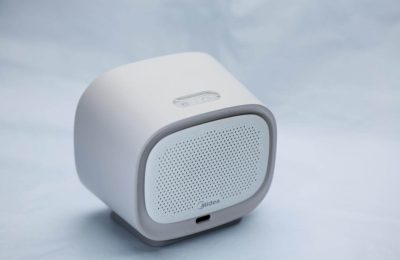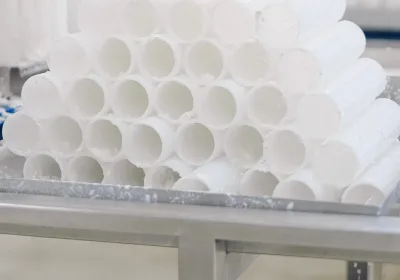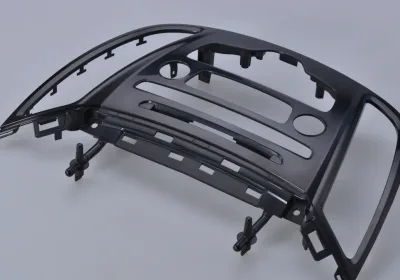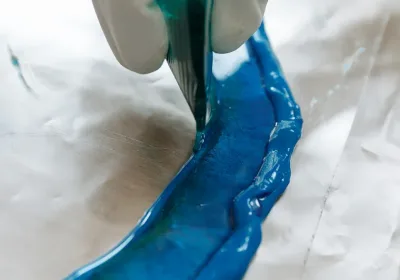
Choosing between vacuum casting and low volume injection molding depends on your specific needs for small batch production. Vacuum casting has a lower initial cost and allows for easier design changes. On the other hand, low volume injection molding produces parts faster and offers a lower cost per part when producing larger quantities. The table below highlights the key differences:
Feature | Vacuum Casting | Low Volume Injection Molding |
|---|---|---|
Setup Cost | Low to moderate | Higher upfront |
Per-Unit Cost | Higher at scale | Lower with volume |
Lead Time | Shorter | Longer setup, faster cycles |
Tool Life | Up to 200 parts | Up to 50,000 shots |
Key Takeaways
Vacuum casting works well for small groups and fast samples. It costs less to begin and lets you change designs easily.
Low volume injection molding is good for bigger batches. It gives better accuracy, stronger pieces, and cheaper parts when you make more.
Silicone molds in vacuum casting last for 20 to 50 pieces. Metal molds in injection molding can make thousands of pieces.
Pick vacuum casting for quick and easy samples. Use low volume injection molding for strong, high-quality parts in larger amounts.
Think about what your project needs, like how many parts, your budget, and how fast you need them. This helps you choose the best way and save money while getting good parts.
Quick Comparison
Key Differences
There are some big differences between vacuum casting and low volume injection molding. Vacuum casting uses silicone molds. It works best for making a small number of parts. This method does not cost much to start. You can change your design quickly if needed. But, the molds do not last long. They need to be replaced often. Low volume injection molding uses metal molds. These molds last a lot longer. They can make many more parts. The first cost is higher. But, each part costs less when you make more of them.
Vacuum casting is good for fast prototypes or small batches. It can make parts with different textures and colors.
Low volume injection molding makes strong and detailed parts. It is great for final prototypes or real products.
Vacuum casting molds last for about 20 to 25 uses. Injection molding tools can make thousands of parts.
The cost is different for each process. Vacuum casting is cheaper to start. Injection molding saves money when you make lots of parts.
Tip: Pick vacuum casting if you need quick and flexible samples. Use low volume injection molding for strong, high-quality parts in bigger amounts.
Summary Table
The table below shows the main differences between vacuum casting and low volume injection molding:
Aspect | Vacuum Casting | Low Volume Injection Molding |
|---|---|---|
Mold Material | Silicone (short lifespan, ~20-25 uses) | Metal (long lifespan, thousands of shots) |
Upfront Cost | Low to moderate | High |
Per-Part Cost | Higher at scale | Lower with volume |
Production Speed | Fast for small batches, hours per part | Fast cycles after setup, seconds to minutes per part |
Detail & Tolerance | Good detail, less precise for complex features | Excellent detail, tight tolerances |
Ideal Use | Prototypes, pre-market testing | End-use parts, final-stage prototypes |
Flexibility | Easy design changes | Less flexible, costly to change molds |
These differences help you pick the right process. Your choice depends on what your project needs and your production goals.
Process Overviews
Vacuum Casting Overview
Vacuum casting is a flexible way to make high-quality prototypes and small batches. The process starts with a master pattern, often made by 3D printing. Technicians use this pattern to create a silicone mold in a vacuum chamber. The vacuum takes out air bubbles. This helps the mold copy details well and keeps the right size.
Silicone molds can be used for 30 to 50 parts. This makes vacuum casting good for short runs of working prototypes or custom parts.
The process works with many polyurethane resins. You can make both hard and soft parts.
The size accuracy is about ±0.1 mm. This is good for most prototype needs.
Parts come out smooth and usually do not need much extra work.
You can make 10 to 1,000 units. It usually takes 1 to 2 weeks.
Metric | Value/Description |
|---|---|
Mold Life | 30-50 parts |
Tolerance | ±0.1 mm |
Surface Finish | Ra 0.4-0.8 μm |
Lead Time | 1-2 weeks |
Material Options | Polyurethane resins |
Application | Prototypes, custom components |
Vacuum casting costs less to start than other ways of making things. But it does not have the same size accuracy or speed as low volume injection molding. This method is best for making prototypes, especially when you need working or special parts fast.
Low Volume Injection Molding Overview
Low volume injection molding uses metal molds like aluminum or steel. It can make hundreds or thousands of parts with high accuracy. The process has four main steps: clamping, injection, cooling, and ejection. Each step helps make strong, custom parts that are always the same.
Mold materials include P20 and NAK80 steels or aluminum. These are picked because they last long and handle heat well.
Aluminum molds are good for quick prototypes and fast design changes. Steel molds give better surface finish and last longer.
Size accuracy can be as close as +/-0.001 inches for steel molds. This is good for jobs that need very exact parts.
You can make 100 to 10,000 parts. This is great for projects between prototypes and big production.
Making the mold takes about two weeks. This means you can get custom parts quickly.
Aspect | Details |
|---|---|
Mold Material | Aluminum, P20/NAK80 steel |
Tolerance | Steel: +/-0.001 in; Aluminum: +/-0.005 in |
Volume Range | 100–10,000 components |
Lead Time | ~2 weeks |
Application | Rapid prototyping, short-run production |
Low volume injection molding gives better size accuracy and makes the same part every time. It is good for quick prototypes, testing, and making small batches for things like medical tools and electronics. This method makes sure each part is made right and works well.
Cost Comparison
Tooling Costs
Tooling costs are important when picking between vacuum casting and low volume injection molding. Vacuum casting uses silicone molds. These molds cost much less than metal ones. Custom tooling for vacuum casting is good for small budgets. It works well for prototypes or short runs. Injection molding uses aluminum or steel molds. These molds need more money at first. But they last much longer and can make thousands of parts. The table below shows the main differences:
Process | Tooling Material | Tooling Cost Range | Suitable Production Volume | Mold Usage Capacity |
|---|---|---|---|---|
Injection Molding | Aluminum/Steel | > $1,000 to ~$10,000 | Economical from 1,000 parts and up | Reusable for 100,000+ parts |
Vacuum Casting | Silicone | Much lower cost | Up to 20-25 parts | Mold usable for ~20-25 parts |
Vacuum casting has lower starting costs. Injection molding saves more money for bigger jobs. Mold life changes the total cost, especially for lots of custom parts.
Per-Part Costs
Per-part costs change based on how many parts you make and which process you use. Vacuum casting has a higher per-part cost. Each silicone mold only makes a few parts. Workers often finish each part by hand, so labor costs go up. Injection molding spreads the high first cost over many parts. Machines do most of the work. This lowers labor costs and makes things faster. For big jobs, injection molding gives a lower part cost and uses materials better. Vacuum casting is best for custom parts in small batches.
Volume Break-Even Points
The break-even point is when injection molding becomes cheaper than vacuum casting. If you make less than 1,000 parts, vacuum casting is better. For 1,000 to 10,000 parts, the best choice depends on your part and project. If you make more than 10,000 parts, injection molding is always cheaper and faster. Companies making lots of parts should pick injection molding to save money. For custom jobs or prototypes, vacuum casting is flexible and less risky.
Note: Always pick the process that matches how many parts you need. This helps you save money and work better on every project.
Speed Comparison
Mold Creation Time
How fast you can make a mold is very important. Vacuum casting is much faster than injection molding. Workers can make silicone molds in just a few hours or days. These molds need to cure for 8 to 16 hours at 40°C. This quick process helps people make prototypes and small batches fast. It is great for projects that need parts quickly.
Injection molding takes a lot longer to make molds. Metal molds are made from steel or aluminum. Making these molds is hard and takes many steps. It can take 4 to 8 weeks to finish a metal mold. These molds are strong and last a long time. They take longer to make but help future production go faster.
Factor | Vacuum Casting (Urethane Casting) | Injection Molding |
|---|---|---|
Lead Time | 5–10 days | 4–8 weeks |
Mold Creation Time | Hours to days | Weeks |
Tooling Cost | $300–600 per silicone mold | $10,000+ per metal mold |
Tip: If you need molds fast and want to change designs easily, vacuum casting is the best choice.
Production Turnaround
Production turnaround means how fast you get finished parts after making the mold. Vacuum casting is good for making small batches quickly. You can get up to 20 parts in about 15 days. This method is good for testing ideas and changing designs fast. It works well for small jobs that need to be done quickly.
Injection molding takes longer at first but is very fast later. Once the metal mold is ready, it makes parts in seconds or minutes. This is great for making lots of the same part. Companies like this because it saves money when making many parts.
Vacuum casting is fast and flexible for prototypes and small batches.
Injection molding is best for making thousands of parts quickly.
Both ways have special benefits. Vacuum casting is good for speed and changing designs. Injection molding is better for making many parts at once.
Quality Comparison
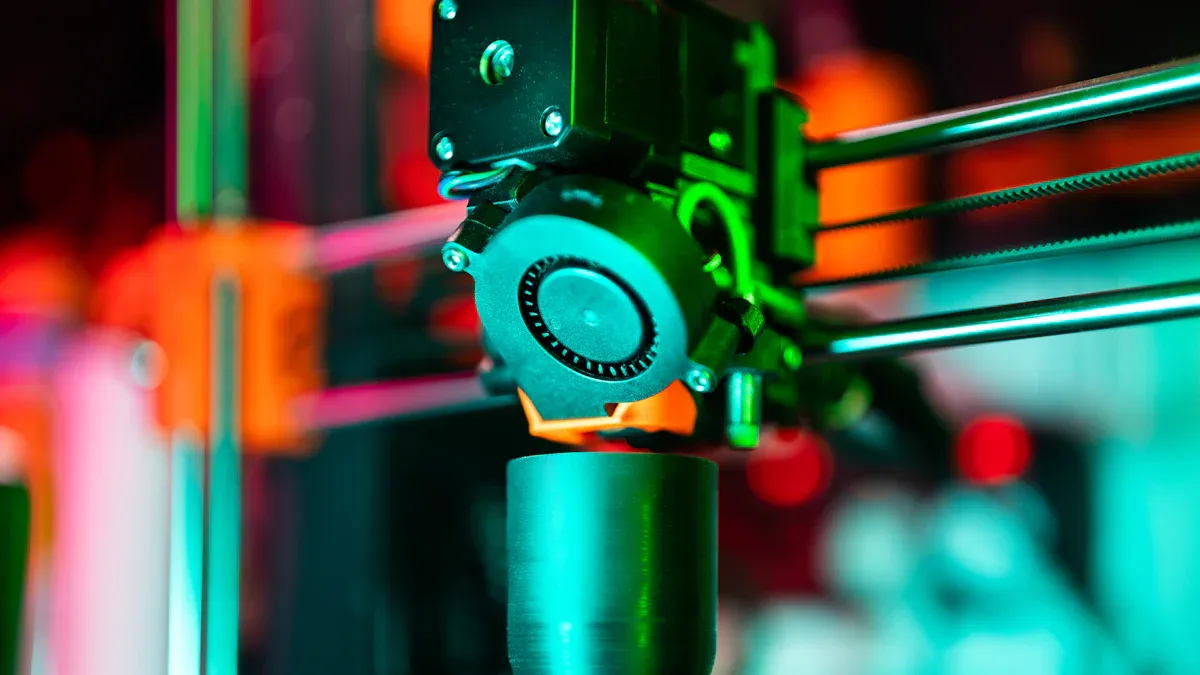
Material Options
Picking the right material is very important for both vacuum casting and low volume injection molding. Both ways let you pick from many materials for different needs. Vacuum casting uses polyurethane, silicone, and PMMA-like resins. These can act like ABS, PC, or PP. This gives you choices for making prototypes or working parts. You should look at things like how strong, hard, or tough the material is. Some resins can handle heat up to 120°C. This makes them good for testing if a part works.
Injection molding has even more materials to pick from. You can use ABS, polycarbonate, polypropylene, nylon, or special mixes. This helps you make parts with the right color, finish, or chemical resistance. You also need to think about heat, sunlight, and rules for safety. Both ways let you mix materials to get the color, hardness, or UV protection you want. Picking the right material helps your parts fit well and look good.
Mechanical properties: tensile strength, elongation, hardness
Thermal properties: heat resistance, thermal expansion
Chemical resistance: oils, solvents, UV, corrosion
Aesthetic properties: surface finish, color, gloss, transparency
Process-specific: flow, curing time, detail retention
Precision & Finish
How close a part is to the right size and how it looks are important. Vacuum casting uses silicone molds in a vacuum. This takes out air bubbles and copies every detail. The parts come out the right size and look smooth. Most parts only need a little trimming. You can pick shiny, dull, or textured finishes. This makes prototypes and working parts look nice.
Low volume injection molding is even more exact. It uses metal molds made by computers and machines. This keeps every part the same, even if you make thousands. The size can be right within ±0.01 mm. This is needed for things like medical or car parts. Injection molding makes smooth plastic parts over and over. It can make more than 2,000 parts each hour. This is good when you need lots of parts that are all the same size.
Metric / Factor | Details / Values |
|---|---|
Tolerance Levels | ±0.01 mm to ±0.02 mm |
Precision Measurement | Measured in microns, essential for dimensional accuracy |
Surface Finish | High-gloss, matte, textured; minimal post-processing |
Mold Design Techniques | CAD, CNC machining, multi-cavity molds for consistent dimensional accuracy |
Applications | Medical, automotive, electronics, and functional components with tight tolerances |
Note: If you need parts that are the right size and look good, both ways work well. Injection molding is best for making lots of parts that must be very exact. Vacuum casting is great for quick samples and special parts.
Low Volume Production Guide
When to Use Vacuum Casting
Vacuum casting is best for making a small number of parts fast. Teams use it when they want detailed parts quickly. This is helpful in medical, car, and electronics projects. Engineers pick vacuum casting to check if their designs work. They can test how things look and fit before spending a lot of money. You can make 10 to 50 parts at a time. This is good for samples and small releases.
Vacuum casting lets teams change designs or materials easily. It does not cost much to make changes. This method works well for tricky shapes and tiny details. The silicone molds copy small features, so parts look almost finished. But the molds only last for about 20 to 25 uses. This means vacuum casting is not good for making lots of parts.
Note: Vacuum casting is a cheap way to make test parts fast. It is best when you need speed and can give up long-lasting molds.
When to Use Low Volume Injection Molding
Low volume injection molding is better when you need more parts. It is used after the first samples, when you want hundreds or thousands of pieces. This process makes the same part every time and keeps sizes exact. It is good for real products and checking advanced designs. Companies use it for runs of 100 to 10,000 parts. It is important when you need strong parts and good materials.
Picking the right plastic is very important here. Engineers can choose from many types, even special ones. The right choice makes parts stronger and cuts down on fixing molds. This process lets you test parts that are almost like the final product. This is needed for safety checks and selling the product.
Technique | Cost (Prototype Scale) | Lead Time | Quality (Surface Finish) | Ideal Quantity | Functional Testing Capability |
|---|---|---|---|---|---|
Vacuum Casting | Medium (master + mold) | Moderate | Very good, production-like | 10-50 units | Good, but not as strong as metals |
Injection Molding (Low Volume) | Higher initial (mold cost) | Longer setup | Excellent, production-like | 100-10,000 units | Similar to final product if same material |
Tip: Pick low volume injection molding when you need more parts, tight sizes, and strong materials.
Choosing by Project Needs
Picking the right way to make parts depends on many things. Teams should think about how many parts they need, how much money they have, how fast they need them, and how hard the parts are to make. If you need less than 100 parts, vacuum casting is fast and easy to change. If you need hundreds or thousands, low volume injection molding saves money and gives better quality.
Project leaders should also check if the supplier has good skills and tools. When looking at prices, teams should also check what services are included and how long it takes. It helps to visit the supplier and ask about their rules, order sizes, and past work. This makes sure the supplier can make good parts.
Count how many parts you need at each step.
Make sure the material fits how the part will be used and any rules.
Pick a process that lets you change designs fast or make the same part many times.
Check if the supplier has the right machines and checks for quality.
Talk often with suppliers to keep things working well.
Blockquote: The best way helps teams test designs and make small batches. This lets them get products out faster and with less risk.
By thinking about these things, teams can pick the best way to make their parts. This helps them save money, work fast, and get good quality for their project.
Vacuum casting does not cost much to start and is fast for small batches.
Low volume injection molding makes parts more exact and cheaper when you make more.
Both ways let you pick strong materials and give good quality.
This guide helps you pick the best way for your project. First, write down what matters most: cost, speed, or quality. Then, talk to a trusted supplier to get help.
FAQ
What is the main advantage of vacuum casting for prototypes?
Vacuum casting is fast and does not cost much to start. Teams can test new ideas quickly. They do not need to spend a lot of money. This way works well for making a few parts. It is also easy to change the design if needed.
How many parts can a silicone mold produce in vacuum casting?
A silicone mold can make about 20 to 50 parts. The number depends on how hard the part is to make. It also depends on what material you use.
Can low volume injection molding use the same materials as mass production?
Yes, low volume injection molding uses the same plastics as big factories. This means the parts are just as strong and look the same as final products.
Which process gives better surface finish and detail?
Low volume injection molding makes parts that are very smooth and detailed. Metal molds help make each part look the same. Vacuum casting also makes nice parts, but they may not always be as perfect as injection molding.
Is it possible to change designs after making the mold?
Vacuum casting lets you change designs easily by making a new silicone mold. For low volume injection molding, you need a new metal mold to change the design. This costs more money and takes more time.
 LKprototype
LKprototype

